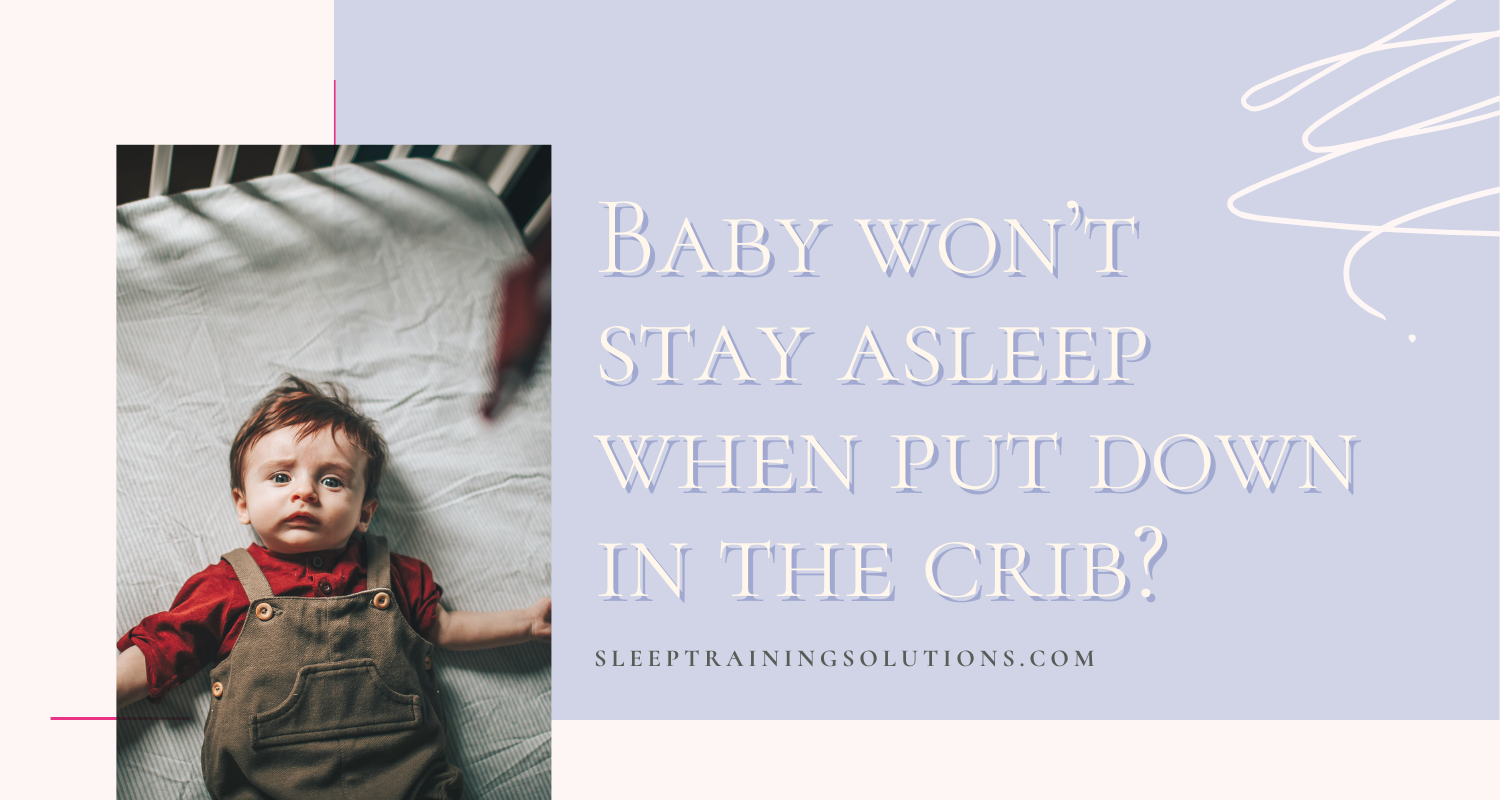5 reasons why sleep training isn’t working
Were you counting the days until your pediatrician said your baby was ready for sleep training so you could finally teach her how to self-soothe to sleep? Or were you hesitant to start sleep training because you weren’t sure it was the right time (or didn’t know where to start)? And then once you finally made the decision to start sleep training, perhaps you saw some changes but not the life-changing progress all your friends talk about? Here are five reasons why sleep training may not be working:
You’re still putting your child down drowsy but awake
The worst advice about baby sleep floating around the internet is to put baby down drowsy but awake.
Because think about this…If he’s depending on you to get him drowsy and do a percentage of the work for him, he’s going to continue needing that from you!
The whole point of sleep training is to help your child learn how to put himself to sleep from fully awake, not drowsy (which is the first stage of sleep) on her own.
DO THIS INSTEAD: During the bedtime and naptime routines, move the feed earlier if your baby gets drowsy with the feed so it’s not the last step. Put a wedge (or stack of diapers) under your rocker or the lock on the glider so you aren’t tempted to lull your little one to sleep with rocking. Make sure when you’re putting your child into the crib that eyes are open!
You were selective which sleep props you got rid of
Maybe you stopped feeding or rocking to sleep…but can’t get rid of the pacifier!
Keeping some sleep props and not others is confusing for your child…it’s like you’re saying “I don’t know if you can really learn how to fall asleep on your own, so I’m just going to keep this backup here, just in case.”
Since you’re sending the message that you don’t think they can do this, so guess what? They’ll continue needing that sleep prop as long as you keep providing it!
DO THIS INSTEAD: When you do sleep training, ALL the sleep props need to be removed! My recommendation is to get rid of them all at once - why prolong the process any longer than it needs to be? Keeping one just slows the progress of learning how to fall asleep without all those things and makes the process less confusing for your little one.
Swapping out old sleep props with new ones
You got rid of the feeding to sleep and pacifier, and that was hard! So perhaps you inadvertently started patting your baby’s tummy once you lay her down in the crib for a few minutes. This keeps her from crying …and she’s getting a little drowsy with the patting!
Remember that first reason listed above why sleep training isn’t working - your baby is getting help from you to get drowsy and start falling asleep.
DO THIS INSTEAD: Look at the new routine and see if you added anything in that shouldn’t be there, especially after you’ve put your baby into the crib awake!
There are so many pieces to successfully sleep training - Download your free PDF and get weekly sleep tips to help set you up for success!
It’s not the right method (or the timing isn’t right)
If you decide to do check-ins as your sleep training strategy, you may be going in too soon (or waiting too long).
If you’re staying in the room to offer more continual comfort, your presence might be too stimulating for your child to fall asleep.
If you’re doing the pick-up-put-down method (PUPD) past the newborn stage, it will lengthen the time you see success because you aren’t providing opportunities for your baby to practice self-soothing. CIO is typically the last option to try once other methods have been tried.
DO THIS INSTEAD: When I work with my coaching clients, I choose the method based on the child’s temperament and the parent’s comfort level. If you’re doing sleep training on your own, ask the question whether you’re choosing a certain method because it feels less hard (or makes you feel less guilty?) or if you’re choosing the method based on what will be easiest for the child. Oftentimes when parents come to me having tried sleep training on their own, they choose the former.
Also, keep a sleep log and see what progress is being made. If after 3-4 days, things are not improving in the duration of crying and/or the length of time your little one is falling asleep, you may need to try a new method.
You and/or your spouse aren’t 100% committed
If your child’s sleep has gotten 80% better with what you’ve done so far, you may be tempted to just leave your progress there, and never get to 100%.
Or maybe some nights you’re really adamant about following your plan, but other nights you’re just too tired and you pull him into your bed at 2 a.m. or fall asleep with your child on the couch because you don’t want to deal with the bedtime drama.
I get it! Being focused on sleep training is hard.
But your (lack of) dedication to the process may be what’s holding back progress….your child is just following your lead!
By not being consistent every night, your child is learning that there are loopholes in this process.
He knows that sometimes you cave and bring him into your bed, but he isn’t sure what caused that to happen, so he’ll continue crying or fussing to see if he can recreate whatever it was to get you to bring him into your bed like the last time!
DO THIS INSTEAD: If you’ve caved a few times, you need to make a decision to stick with your plan! Going back and forth is so confusing for your child because if sometimes he cries and you respond one way that he likes and the next time you respond in a way that doesn’t get him what he’s looking for (i.e. going into your bed), it’s frustrating…and not teaching him anything besides when you cry, you may get Reaction A and you may get Reaction B.
Do you need help getting your sleep training process back on track? Need someone YOU can lean on for support during this process? Set up a time to chat with me and we’ll get your child on the right path in just a few days!
Related Posts:
This post is for informational purposes only and may not be the best fit for you, your child and/or your personal situation. It shall not be construed as medical advice. The information and education provided here is not intended or implied to supplement or replace professional medical treatment, advice, and/or diagnosis. Always check with your child’s physician or medical professional before trying or implementing any information read here.






